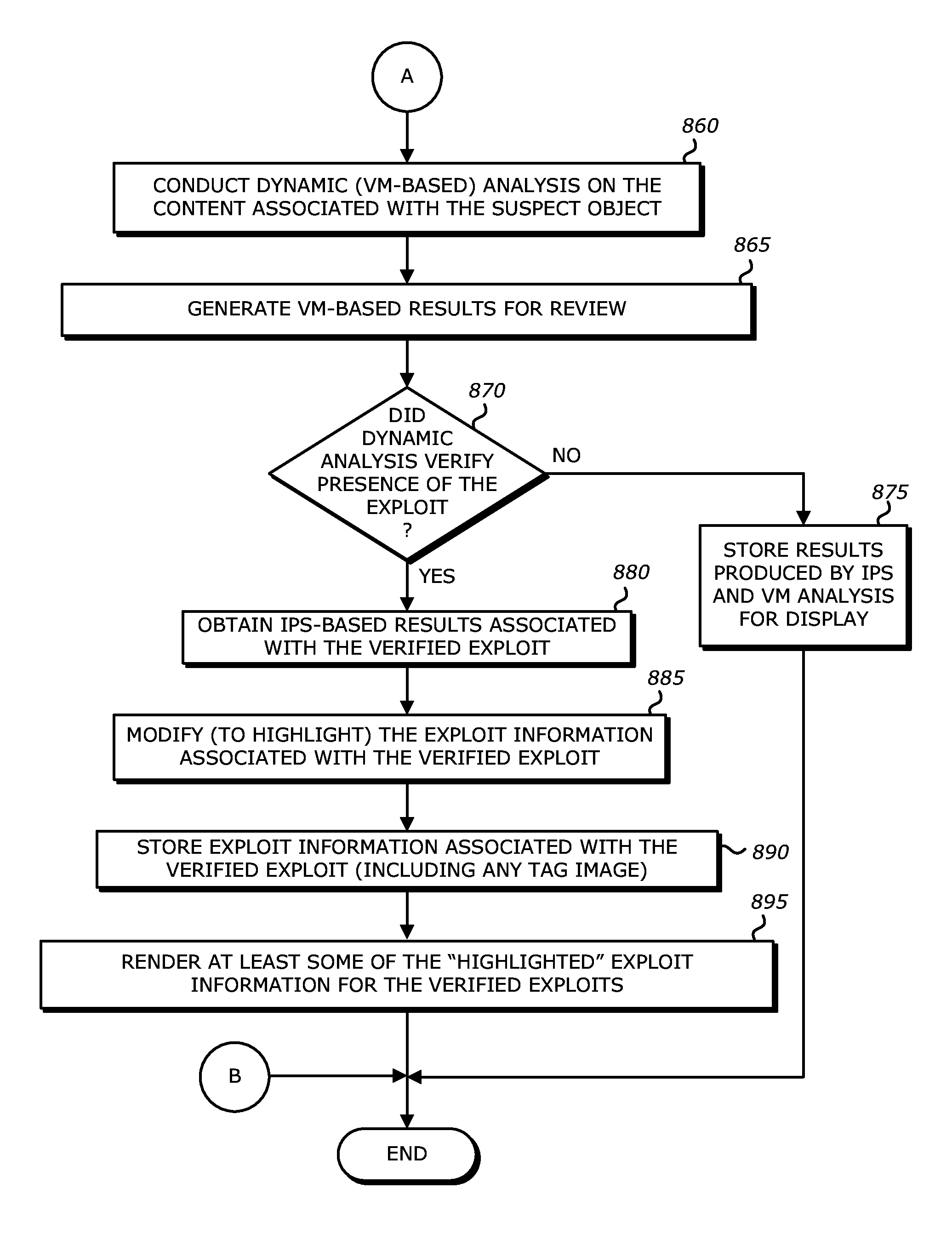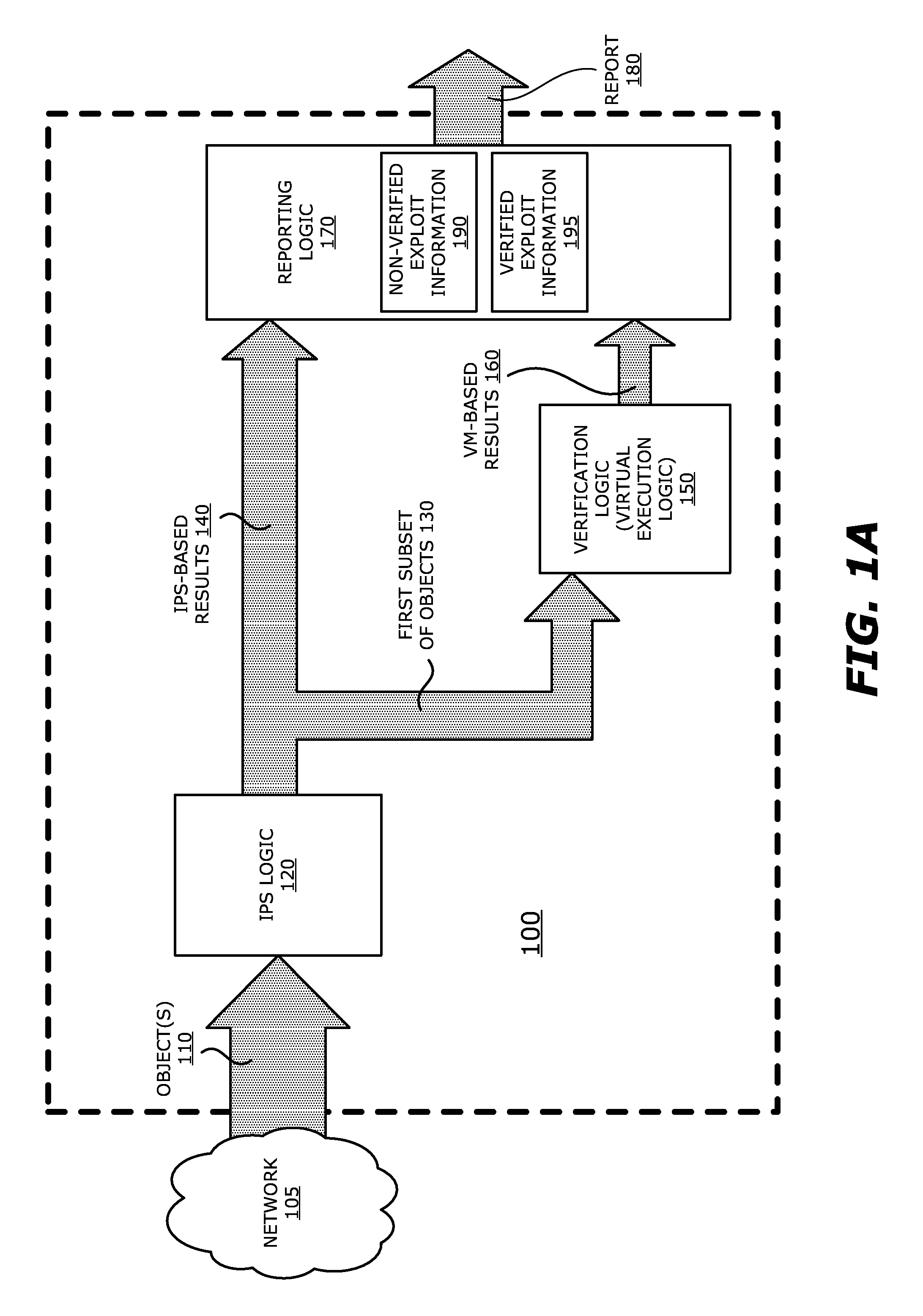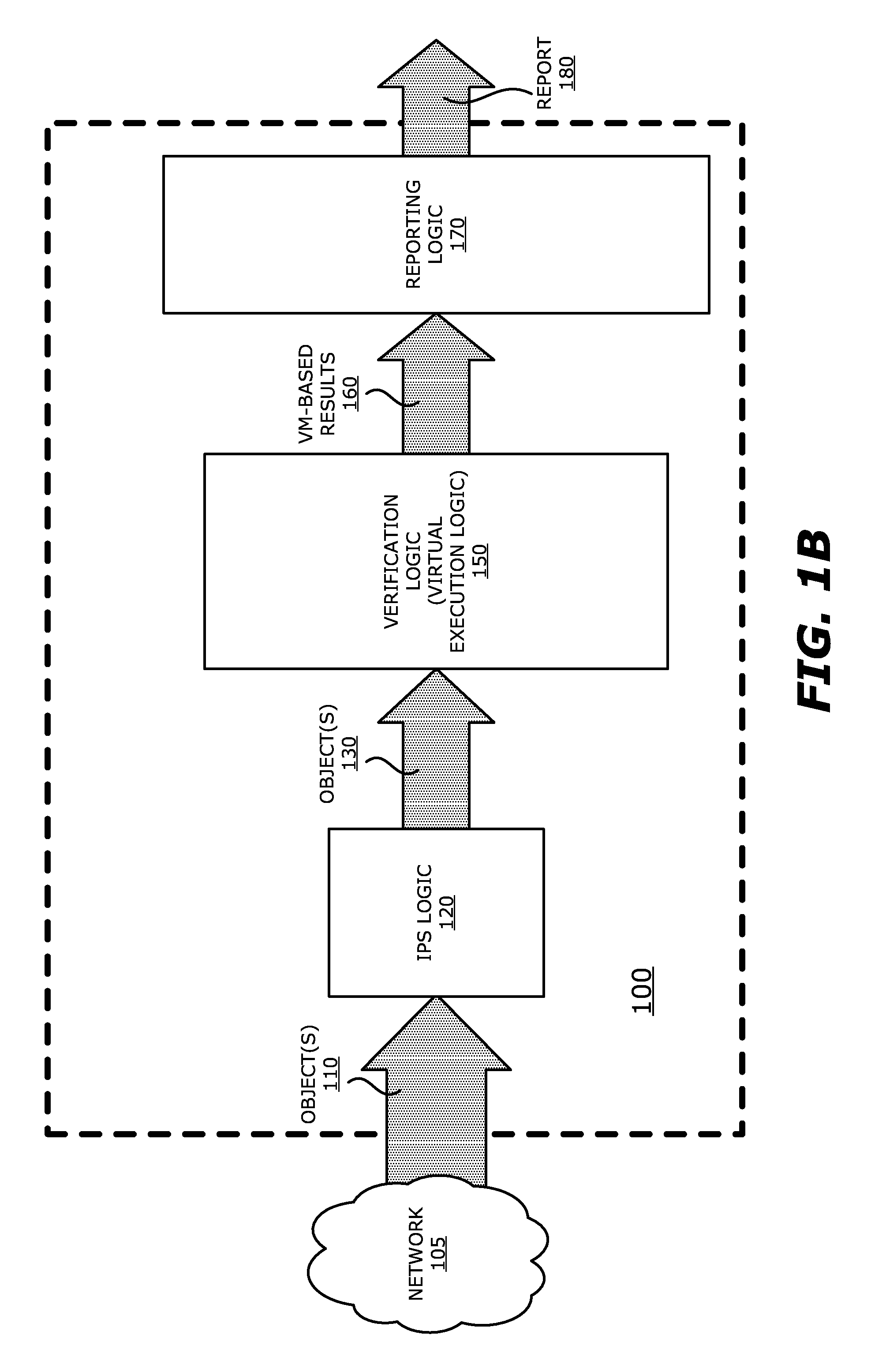System, apparatus and method for automatically verifying exploits within suspect objects and highlighting the display information associated with the verified exploits
a technology of automatic verification and suspect objects, applied in the field of network security, can solve the problems of conventional ips technology suffering from a number, ips does not rely on any mechanism, and malicious software has become a pervasive problem for internet users
- Summary
- Abstract
- Description
- Claims
- Application Information
AI Technical Summary
Benefits of technology
Problems solved by technology
Method used
Image
Examples
first embodiment
[0047]Referring to FIG. 2A, an exemplary block diagram of a communication system 200 deploying a plurality of threat detection and prevention (TDP) systems 2101-210N (N>1, e.g., N=3) communicatively coupled to a management system 220 via a network 225 is shown. In general, management system 220 is adapted to manage TDP systems 2101-2103. For instance, management system 220 is responsible for automatically updating one or more exploit signatures and / or vulnerability signatures used by IPS logic within some or all of TDP systems 2101-210N. Each of these signatures may represent a prior detected exploit or an uncovered software vulnerability. Such sharing may be conducted automatically or manually uploaded by an administrator. Also, such sharing may be conducted freely among the TDP systems 2101-2103 or subject to a subscription basis.
[0048]Herein, according to the embodiment illustrated in FIG. 2A, a first TDP system 2101 is an electronic device that is adapted to analyze information ...
second embodiment
[0075]Referring now to FIG. 2B, first TDP system 2101 may be coupled with the communication network 230 in line with client device 234. Contrary to the embodiment illustrated in FIG. 2A, first TDP system 2101 comprises an interface unit 295 that directs signaling on communication network 230 to static analysis engine 250 or classification logic 285, given that the dynamic analysis engine 270 is deployed in cloud computing services 240. Hence, objects from network traffic for static analysis are routed to static analysis engine 250 via communication path 296. The suspicious objects may be routed via path 297 to the dynamic analysis engine 270 in cloud computing services 240. Similarly, objects that are not determined to be at least “suspect” may be returned via path 297 for continued routing to client device 234. The results of the dynamic analysis engine 270 (e.g., exploit information) may be routed via path 298 for prioritization and tagging before storage within database 255 for s...
PUM
 Login to View More
Login to View More Abstract
Description
Claims
Application Information
 Login to View More
Login to View More - R&D
- Intellectual Property
- Life Sciences
- Materials
- Tech Scout
- Unparalleled Data Quality
- Higher Quality Content
- 60% Fewer Hallucinations
Browse by: Latest US Patents, China's latest patents, Technical Efficacy Thesaurus, Application Domain, Technology Topic, Popular Technical Reports.
© 2025 PatSnap. All rights reserved.Legal|Privacy policy|Modern Slavery Act Transparency Statement|Sitemap|About US| Contact US: help@patsnap.com



